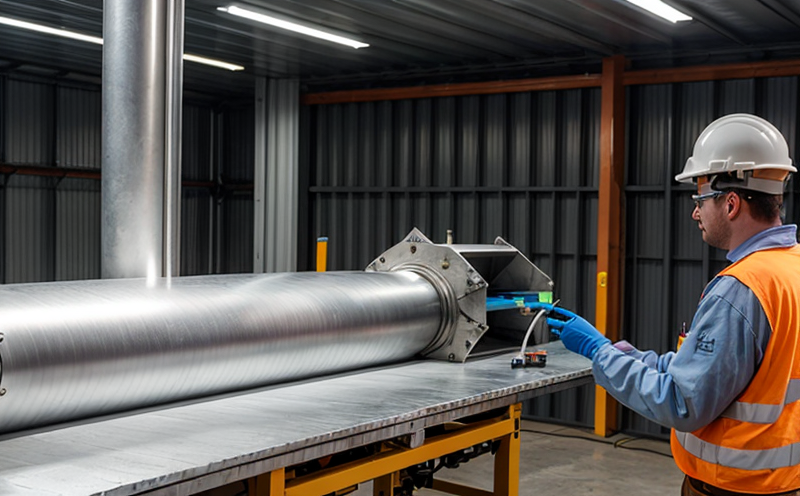IEC 62804 Potential Induced Degradation Testing of PV Components
The International Electrotechnical Commission (IEC) Standard IEC 62804 is a critical guideline for the testing and evaluation of photovoltaic (PV) components. This standard addresses one of the most significant challenges in the solar energy sector: potential-induced degradation (PID). PID occurs when an electric field forms between the back contact of a PV module and its grounding, leading to negative impacts on performance and longevity.
PID is particularly problematic for large-scale solar installations due to the high voltages present during operation. This condition can cause a loss in power output, which significantly reduces the financial return from these investments. The IEC 62804 standard provides a comprehensive framework for testing PV components under conditions that simulate PID, allowing manufacturers and installers to ensure their products meet stringent performance criteria.
Testing according to this standard involves subjecting the specimen to various stressors, including high voltages and humidity levels. This process is designed to mimic real-world operating conditions where PID might occur. The testing procedure typically includes:
- Setting up the PV module in a controlled environment
- Applying an electric field across the back contact of the module
- Maintaining this condition for a specified duration
- Monitoring and recording any changes in performance parameters such as power output, voltage, current, and resistance
- Evaluating the specimen's ability to withstand these conditions without degradation
The primary goal of IEC 62804 testing is to identify potential issues early in the product lifecycle, thereby minimizing the risk of field failures. This standard is particularly valuable for quality managers and compliance officers who need to ensure their PV components meet international standards and can perform reliably under various operating conditions.
By conducting these tests, manufacturers can improve product design, optimize material selection, and enhance overall performance. For R&D engineers, this testing process offers insights into the behavior of different materials and configurations in real-world scenarios. Additionally, procurement teams benefit from a clear understanding of what constitutes acceptable performance levels for their suppliers.
The IEC 62804 standard is part of a broader suite of guidelines that focus on ensuring the integrity and reliability of PV systems. Compliance with these standards not only enhances product quality but also supports the long-term sustainability goals of renewable energy projects.
Quality and Reliability Assurance
The IEC 62804 standard plays a pivotal role in ensuring the quality and reliability of PV components by providing a standardized method for assessing potential-induced degradation. This section outlines key aspects that contribute to the robustness and dependability of testing according to this standard.
- Test Methodology: The IEC 62804 specifies precise procedures for setting up test environments, applying stressors like high voltages, and monitoring performance metrics. This ensures consistent results across different laboratories and installations.
- Data Analysis: Post-test data is analyzed to determine the extent of degradation if any. Statistical methods are employed to validate the reliability and accuracy of these assessments.
- Environmental Controls: The testing environment must be controlled to replicate real-world conditions as closely as possible, ensuring that the results accurately reflect field performance.
- Material Integrity: The standard also emphasizes the importance of maintaining material integrity during testing. This includes preventing damage from excessive voltage or moisture exposure.
The reliability and accuracy of IEC 62804 testing are further enhanced by adherence to international standards such as ISO/IEC Guide 98-3, which provides guidance on the expression of uncertainty in measurement. This ensures that all test results are traceable and comparable across different laboratories.
By focusing on these quality assurance measures, IEC 62804 testing helps manufacturers and installers identify and address potential issues before they become critical problems in actual installations. This not only improves product reliability but also contributes to the overall efficiency and sustainability of renewable energy projects.
Customer Impact and Satisfaction
The IEC 62804 standard has a direct impact on customer satisfaction by ensuring that PV components meet stringent performance criteria. For quality managers and compliance officers, compliance with this standard translates into enhanced product reliability and reduced warranty claims.
For R&D engineers, the insights gained from IEC 62804 testing can lead to innovations in material science and design optimization, ultimately resulting in more efficient and durable PV systems. This leads to higher customer satisfaction as users experience better performance and longevity of their solar installations.
The standard also benefits procurement teams by providing clear guidelines on acceptable performance levels for suppliers. This ensures that only high-quality components are used, leading to consistent product performance across different projects. As a result, customers can expect reliable energy production from their PV systems, which is crucial for the success of renewable energy initiatives.
In summary, IEC 62804 testing enhances customer satisfaction by delivering products and systems that meet or exceed expectations. This contributes to the overall sustainability and economic viability of solar energy projects.
Use Cases and Application Examples
The IEC 62804 standard finds application in various scenarios within the renewable energy sector, particularly for large-scale PV installations and manufacturing facilities. Here are some specific use cases:
- Manufacturing Quality Control: Before releasing products to market, manufacturers conduct IEC 62804 testing to ensure that their components meet or exceed performance criteria.
- Field Testing: After installation, PV systems undergo field testing using IEC 62804 protocols to identify any potential issues early on. This helps in implementing corrective measures promptly.
- R&D Projects: Researchers and engineers use this standard as a benchmark for developing new materials and technologies that can withstand PID conditions.
- Supplier Audits: During audits, IEC 62804 results are reviewed to ensure suppliers adhere to the highest quality standards.
- Regulatory Compliance: Many regulatory bodies require compliance with IEC 62804 as part of certification processes for PV components and systems.
In each of these applications, the standard serves as a critical tool for ensuring that PV components perform reliably under real-world conditions. This reliability is essential for the success of renewable energy projects, which are increasingly relied upon to meet global energy demands sustainably.





